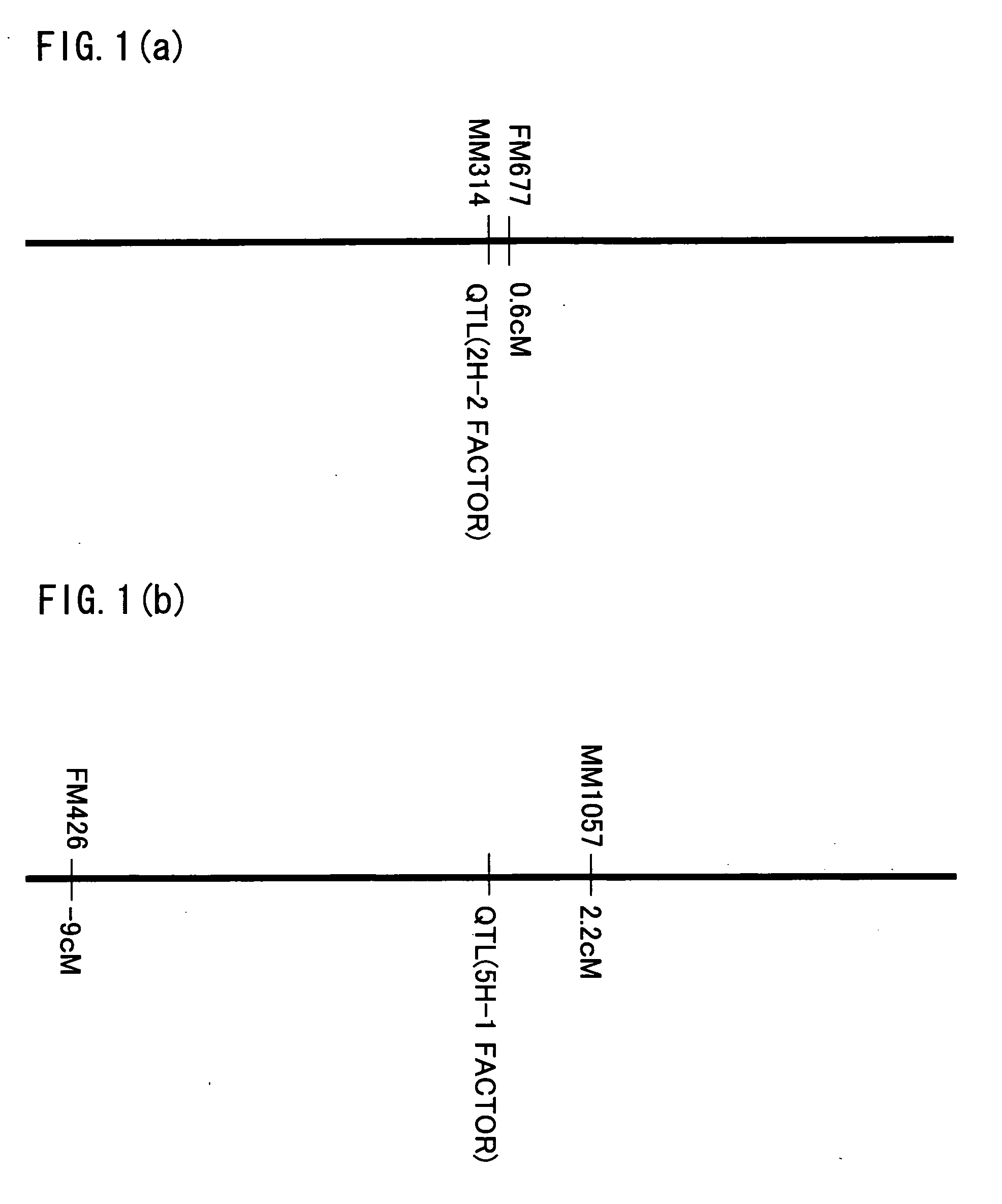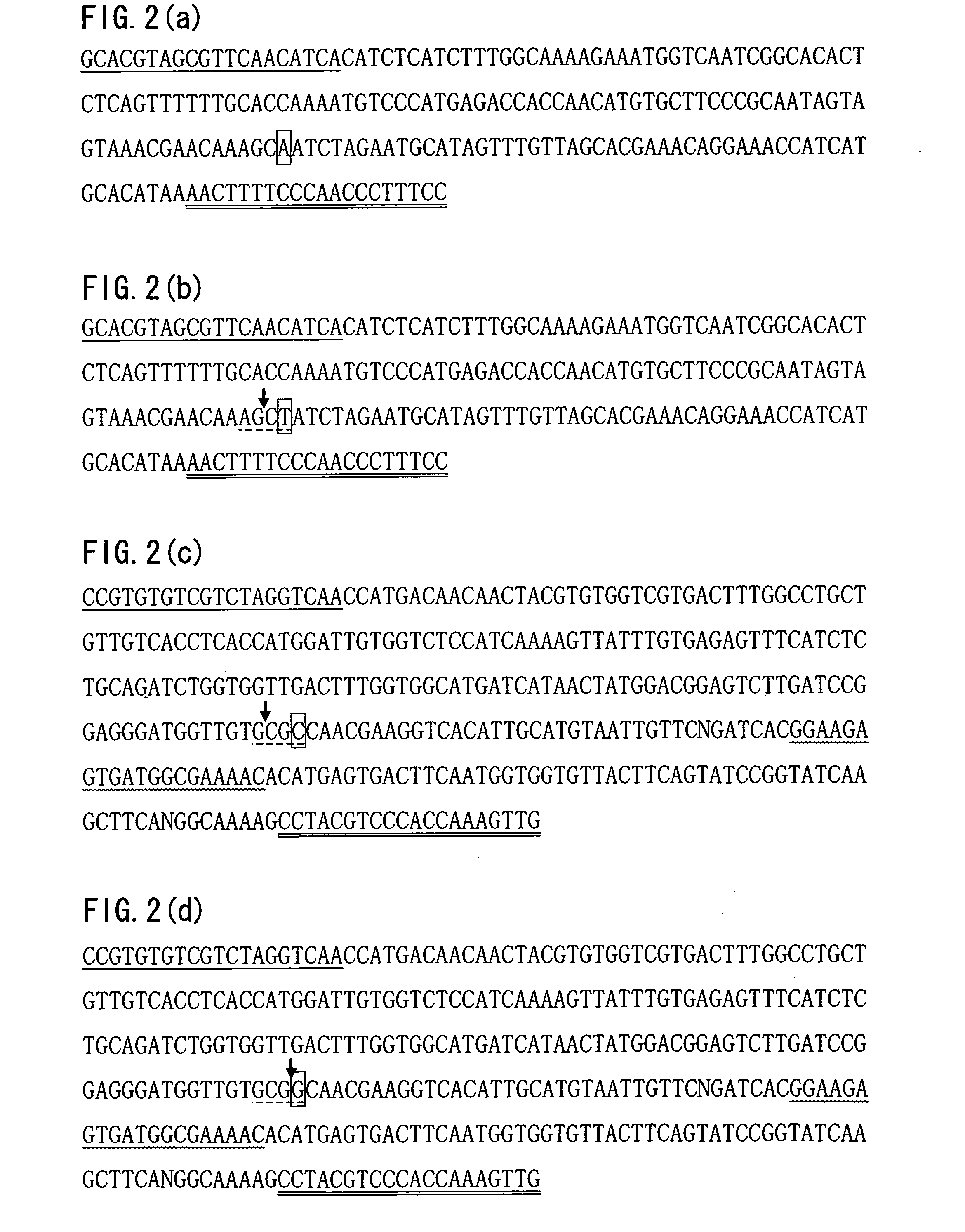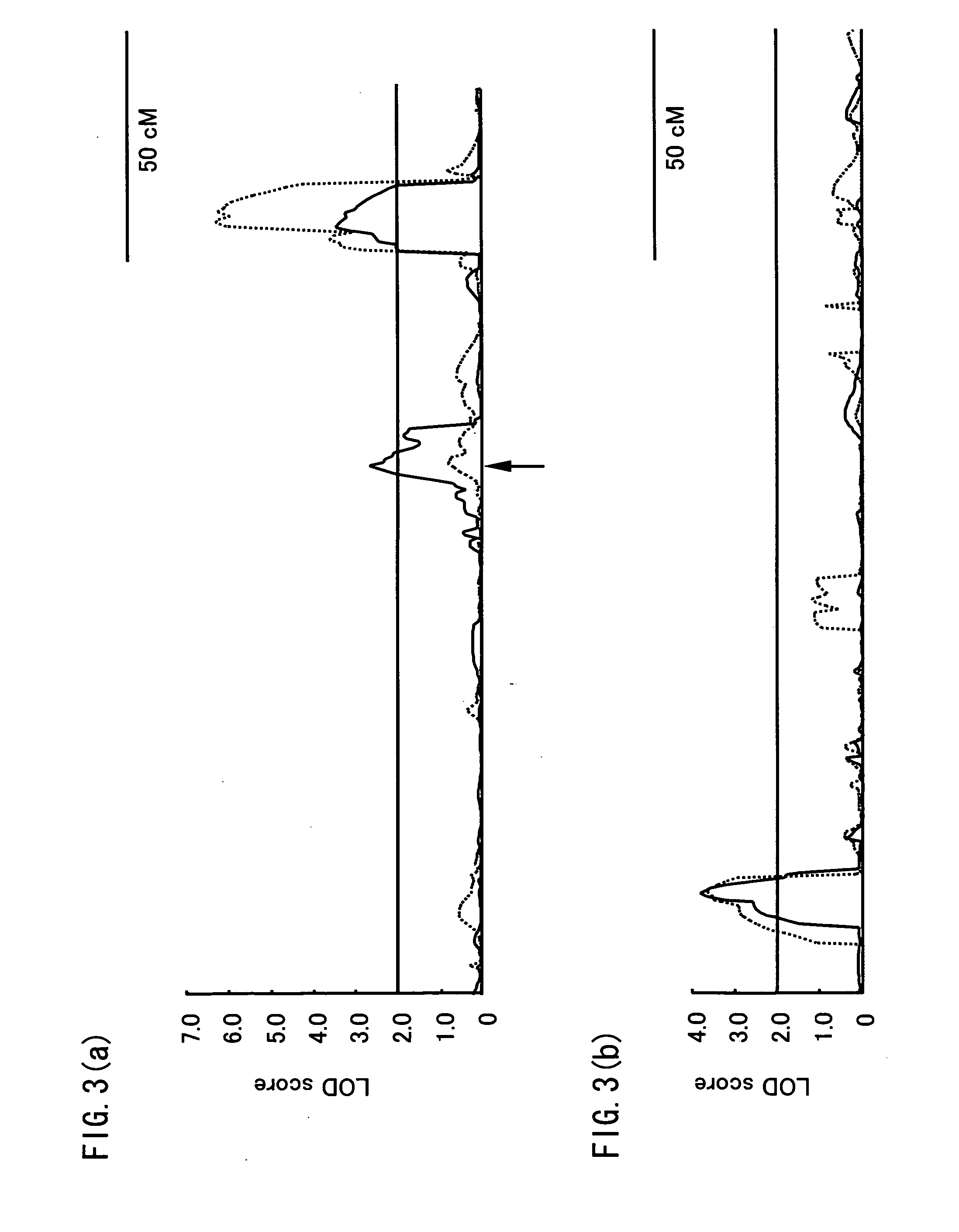Genetic markers linked to fusarium head blight-resistance factor and utilization thereof
a technology of fusarium and resistance factor, applied in the field of gene markers linked to fusarium head blight resistance factor and utilization thereof, can solve the problems of large labor, large agricultural field, and further spreading of infection, and achieve the effect of easy judgmen
- Summary
- Abstract
- Description
- Claims
- Application Information
AI Technical Summary
Benefits of technology
Problems solved by technology
Method used
Image
Examples
embodiment 1
[0113] One embodiment according to the present invention is described below, referring to FIGS. 1 to 7. It should be noted that the present invention is not limited to this.
[0114] The present invention relates to a genetic marker (e.g., DNA marker) linked to Fusarium head blight-resistance factor, and utilization thereof, which are described below respectively.
[0115] [1. Genetic Marker According to the Present Invention]
[0116] The genetic marker according to the present invention exists in a genomic DNA of a Gramineae species (Hordeum and the like (such as barley)), and is linked to a Fusarium head blight-resistance factor.
[0117] In the present invention, the “Hordeum and the like” encompasses: barley, wheat, rye, triticale, and the like.
[0118]Fusarium Head Blight and Fusarium Head Blight-Resistance Factor>
[0119]“Fusarium head blight” is a disease caused by infection of Fusarium spp. to Hordeum and the like, as described above. Fusarium head blight is a serious disease because n...
example 1
QTL Analysis Regarding Fusarium Head Blight Resistance of Barley
[0291] A QTL analysis was conducted to search for a Fusarium head blight-resistance factor of barley.
[0292]
[0293] Used were recombinant inbed lines (RI lines) derived from the cross of Russia 6 (two-row, resistant) and H.E.S.4 (six-row, susceptible), which are barley cultivar largely different in resistance against Fusarium head blight.
[0294]Fusarium Head Blight Resistance>
[0295] A modified “Cut-Spike Test” (see Non-Patent Document 4) was used for the evaluation. The evaluation of the Fusarium head blight is briefly explained below.
[0296] The material was cultivated according to a generally-used method. For each RI line, a spike was cut off, with a flag leaf, from a stem at the first internode in flowering period. The spikes were held stand in a stainless tray into which tap water was continuously run. To the spikes the inoculum was sufficiently spayed, which was prepares such that fifteen conidiums of the Fusarium ...
example 2
Judgment Whether Fusarium Head Blight-Resistance Factor was Present or not, by detecting Genetic Marker (Judging Whether Barley was Fusarium Head Blight-Resistant Barley or not)
[0302] By detecting genetic markers according to the present invention, a barley was tested to judge whether the barley had a Fusarium head blight-resistance factor or not. Further, from the result of the judgment, it was judged whether the tested barley was a Fusarium head blight-resistant barley or not.
[0303]
[0304] Used were recombinant inbed lines (RI lines) derived from the cross of Russia 6 (two-row, resistant) and H.E.S.4 (six-row, susceptible), which are barley cultivar largely different in resistance against Fusarium head blight.
[0305]
[0306] From leaf blades of the RI lines grown in a glass house, DNAs were extracted according to a method of Langridge et al. (see Peter Langridge, Angelo Karakousis and Jan Nield. (1997) Practical Workshop in Basic Recombinant DNA Techniques Course Manual. Waite Agri...
PUM
| Property | Measurement | Unit |
|---|---|---|
| Temperature | aaaaa | aaaaa |
| Temperature | aaaaa | aaaaa |
| Fraction | aaaaa | aaaaa |
Abstract
Description
Claims
Application Information
 Login to View More
Login to View More - R&D
- Intellectual Property
- Life Sciences
- Materials
- Tech Scout
- Unparalleled Data Quality
- Higher Quality Content
- 60% Fewer Hallucinations
Browse by: Latest US Patents, China's latest patents, Technical Efficacy Thesaurus, Application Domain, Technology Topic, Popular Technical Reports.
© 2025 PatSnap. All rights reserved.Legal|Privacy policy|Modern Slavery Act Transparency Statement|Sitemap|About US| Contact US: help@patsnap.com



